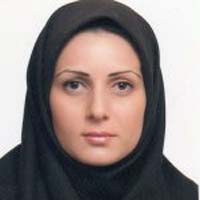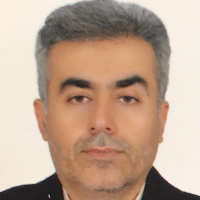Wintering population fluctuation of the Anatidae family in the Bakhtegan Basin Wetlands, Iran
Anatidae family is considered as a biological indicator of wetlands due to their migratory behavior, wide distribution and high population density. Three wetlands of the Bakhtegan basin, namely Bakhtegan, Tashk and Kamjan in Fars province, are important habitats for Anatidae in the central plateau of Iran. The purpose of this research was to evaluate fluctuations in the wintering population of the Anatidae family in wetlands of the Bakhtegan basin in a long-term period of 52 years from 1967 to 2018.
Data on the population and diversity of waterbirds were obtained from a 52-year census data of the Department of the Environmental of Iran. Results of field studies in 2019 were also used to investigate their current habitat condition, data validation and monitoring of Anatidae populations. Of 21 Anatidae species recorded in Iran, nine species with a population of more than 50 individuals per year and observed at least 20 years, were investigated along with the Vulnerable species (VU) of Common Pochard Aythya ferina. Annual changes in the total population of waterbirds, the number of species in each year, the proportion of Anatidae in the population and the diversity of waterbirds in Bakhtegan wetlands and the statistical trend of population changes of species were analyzed. Trend of long-term changes in the population of Anatidae species were calculated using the RTRIM statistical package and Multi-species Indicators (MSI).
A total of 21 of Anatidae species, including Endangered species (EN) of White-headed Duck Oxyura leucocephala, Marbled Duck Marmaronetta angustirostris (VU) and Common Pochard (VU) and Near Threatened species (NT) of Ferruginous Duck Aythya nyroca were identified in the wetlands of Bakhtegan basin. The average population of Anatidae in a 31-year period (1988–2008) was more than 169,000 individuals, but in the last ten years (2009–2018), it decreased to 6,623 individuals. The highest number of total population was in 1995 with 632,510 individuals and the lowest with 1,135 individuals in 2016. The highest and lowest number of species were in 2000 and 2010 with 13 and 3 species, respectively. The statistical trend of the population changes showed that the Greylag Goose Anser anser faced a steep decline in the long-term with a slope of -21%, the Shelduck Tadorna tadorna with a steep decline (-8.4%), the Ruddy Shelduck Tadorna ferruginea with a stable population and zero percent, the Mallard Anas platyrhynchos and the Eurasian Teal Anas crecca with a steep decline and slope of -12.1% and -6.5%, respectively. Trend of changes in the last ten years for the Greylag Goose was stable (0.1%), Shelduck with an uncertain state (4.8%), Ruddy Shelduck and Mallard with a decrease and a slop of -3.8% and -9.4%, respectively, and Eurasian Teal with a strong increase (48.9%). The results indicate that Bakhtegan wetlands had a high proportion of waterbirds during the 1990s to the early 2000s, but it has lost its position in the last 15 years. Bakhtegan wetlands used to be the breeding habitat for Marbled Ducks, but there have been no reports of its breeding in recent years.The reduction of water level, drying wet areas and changes in habitat variables have been the most important factors in reduction of the population and diversity of Anatide species.
The Anatidae family has more than 30% of species diversity and more than 53% of the total population of waterbirds in Bakhtegan wetlands. Currently, it is possible for birds to spend the winter in only a small part of Tashk wetland in the area of Gamban spring. Reconstruction, restoration and making continuous and effective protection of the wetland chain of Bakhtegan Basin requires allocating the required water from diverse water sources for its biological sustainability. In the case of increasing the level and depth of these water areas, the possibility of increasing the population and diversity of diving ducks and Mergus species is expected. Due to the importance of the participation of stakeholders in the protection and restoration of wetlands, it is necessary to take action regarding the allocation of biological water rights and participatory protection of wetlands according to the social, economic, cultural and political conditions.
- حق عضویت دریافتی صرف حمایت از نشریات عضو و نگهداری، تکمیل و توسعه مگیران میشود.
- پرداخت حق اشتراک و دانلود مقالات اجازه بازنشر آن در سایر رسانههای چاپی و دیجیتال را به کاربر نمیدهد.



